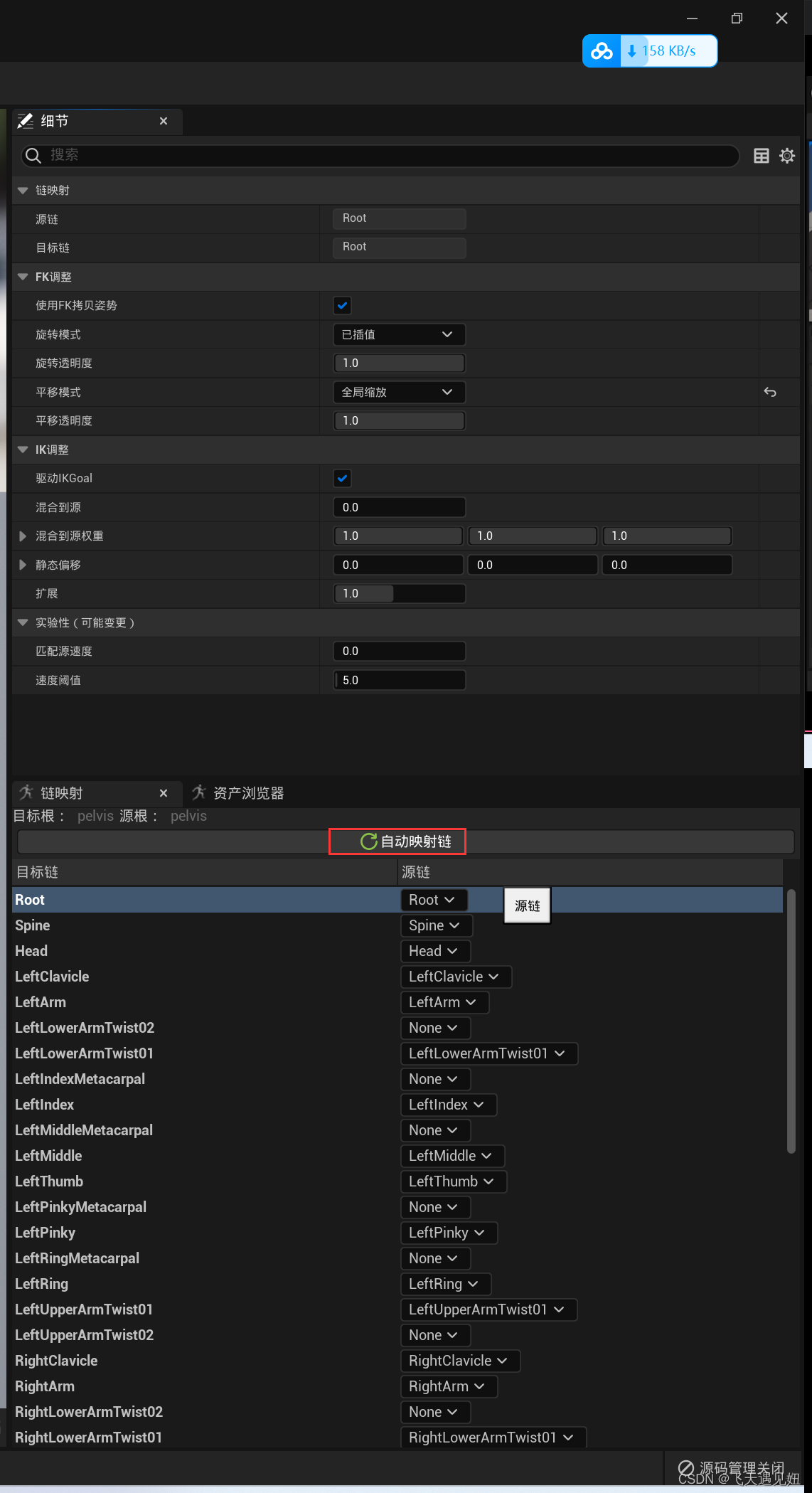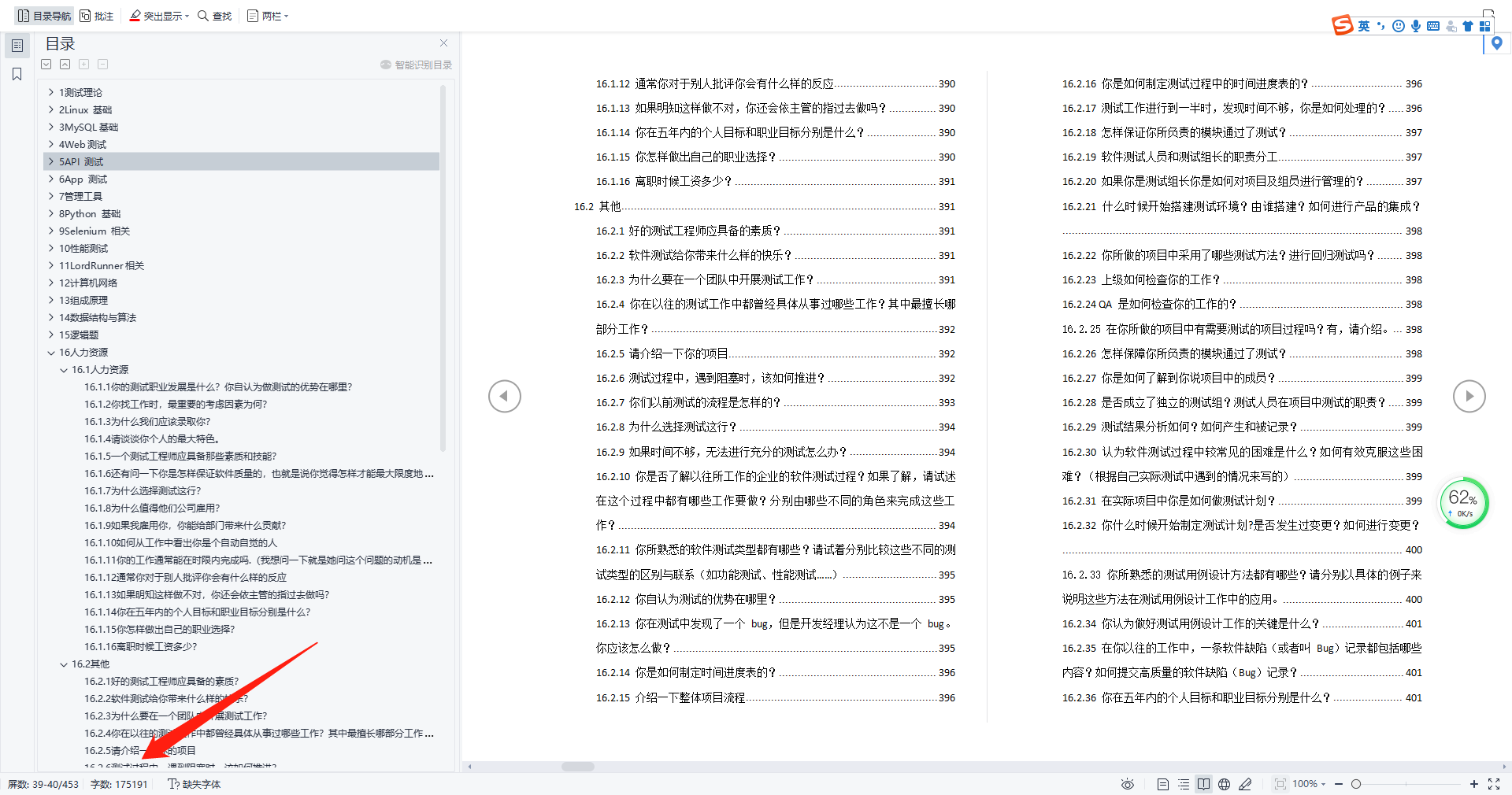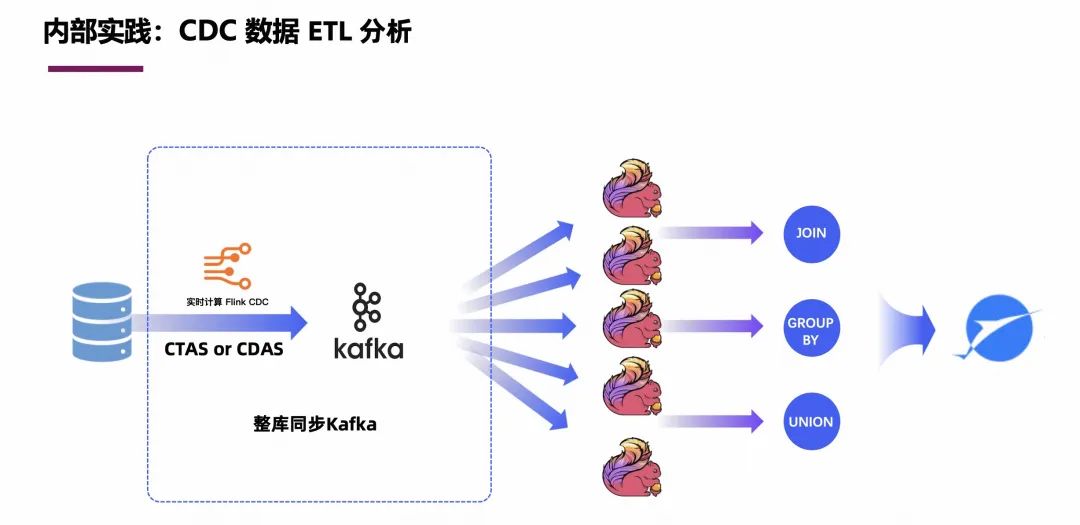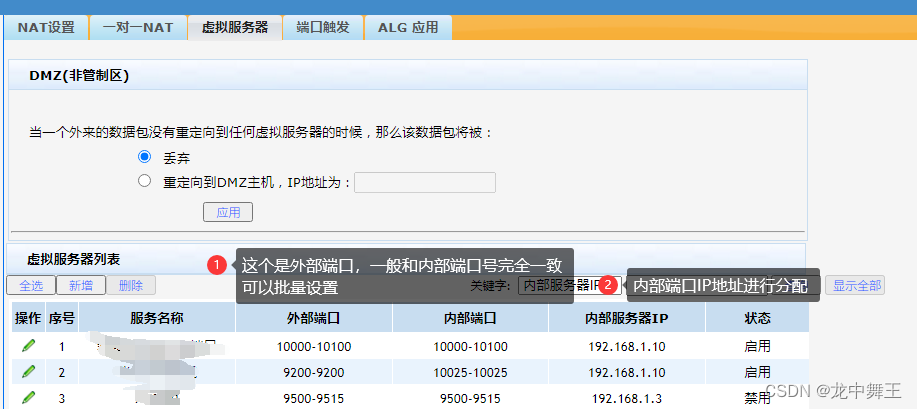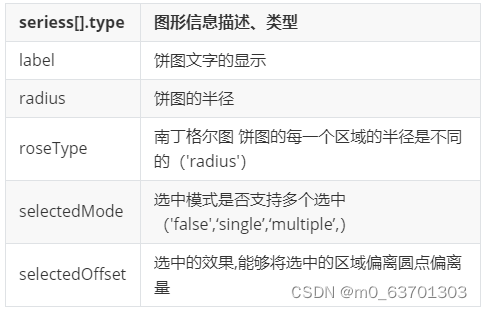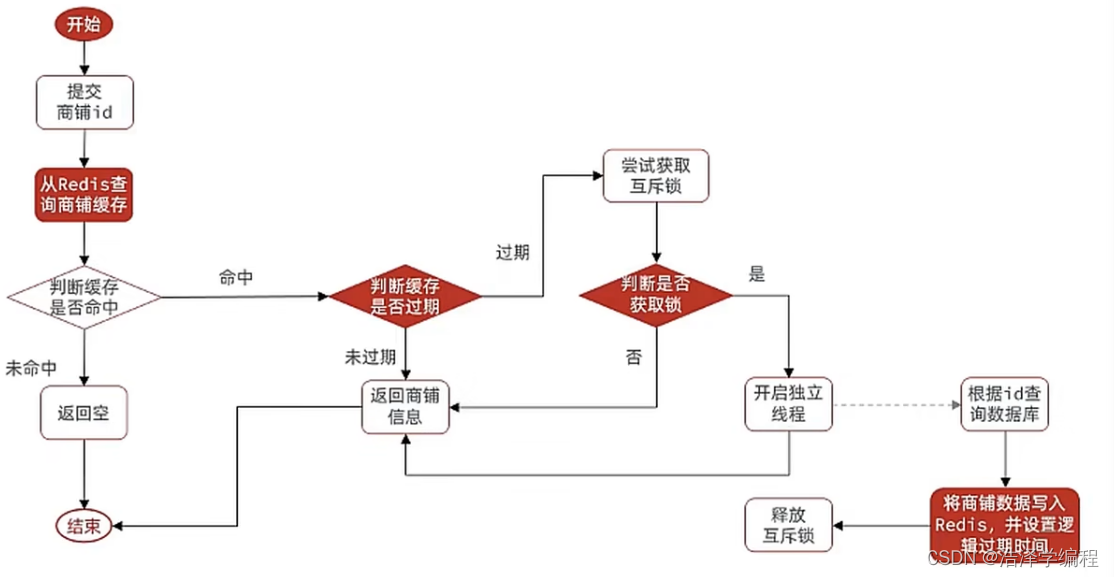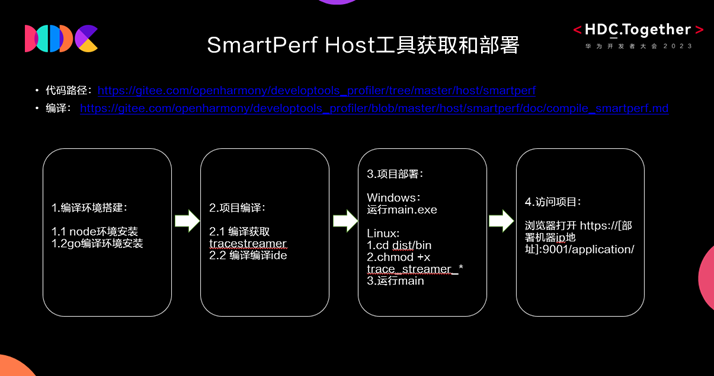1.升级内核
systemctl stop firewalld
systemctl disable firewalld
rpm --import https://www.elrepo.org/RPM-GPG-KEY-elrepo.org
rpm -Uvh http://www.elrepo.org/elrepo-release-7.0-2.el7.elrepo.noarch.rpm
yum --enablerepo="elrepo-kernel" list --showduplicates | sort -r | grep kernel-ml.x86_64
yum --enablerepo=elrepo-kernel install kernel-ml-devel kernel-ml -y
vi /etc/default/grub
# 把GRUB_DEFAULT=saved改成GRUB_0=saved
grub2-mkconfig -o /boot/grub2/grub.cfg
awk -F\' '$1=="menuentry " {print $2}' /etc/grub2.cfg
awk -F\' '$1=="menuentry " {print $2}' /boot/grub2/grub.cfg
grub2-set-default 0
reboot
uname -r
# 清理内核
rpm -qa | grep kernel
yum remove -y kernel-tools-3.10.0-1160.el7.x86_64 kernel-tools-libs-3.10.0-1160.el7.x86_64 kernel-3.10.0-1160.el7.x86_64
2.安装目标数据库
hostnamectl set-hostname cwfk01
vi /etc/hosts
10.10.127.16 cwfk01
grep SwapTotal /proc/meminfo
free
dd if=/dev/zero of=/home/swap bs=1M count=3072
mkswap /home/swap
swapon /home/swap
chmod -R 0600 /home/swap
free –h
echo "/home/swap swap swap defaults 0 0" >> /etc/fstab
sed -i "s/SELINUX=enforcing/SELINUX=disabled/" /etc/selinux/config
cat /etc/selinux/config
setenforce 0
systemctl stop firewalld
systemctl disable firewalld
yum -y install binutils compat-libcap1 compat-libstdc++-33 gcc gcc-c++ glibc glibc-devel ksh libaio libaio-devel libgcc libstdc++ libstdc++-devel libXi libXtst make sysstat unixODBC unixODBC-devel unzip wget
rpm -q binutils compat-libcap1 compat-libstdc++-33 gcc gcc-c++ glibc glibc-devel ksh libaio libaio-devel libgcc libstdc++ libstdc++-devel libXi libXtst make sysstat unixODBC unixODBC-devel | grep "not installed"
cat << EOF >> /etc/security/limits.conf
oracle soft nproc 16384
oracle hard nproc 16384
oracle soft nofile 65536
oracle hard nofile 65536
oracle soft stack 10240
EOF
# 计算kernel.shmmax=(内存总数)16G*1024*1024*1024*90% = 15461882265
# 计算kernel.shmmax=(内存总数)32G*1024*1024*1024*90% = 30923764531
# 计算kernel.shmmax=(内存总数)96G*1024*1024*1024*90% = 92771293593
# 计算kernel.shmmax=(内存总数)128G*1024*1024*1024*90% = 123695058126
# 计算公式:kernel.shmall = kernel.shmmax / 4096 = 15461882265/4096 = 3774873
# 计算公式:kernel.shmall = kernel.shmmax / 4096 = 30923764531/4096 = 7549747
# 计算公式:kernel.shmall = kernel.shmmax / 4096 = 92771293593/4096 = 22649241
# 计算公式:kernel.shmall = kernel.shmmax / 4096 = 123695058125/4096 = 30198988
cat << EOF >> /etc/sysctl.conf
fs.aio-max-nr = 1048576
fs.file-max = 6815744
kernel.shmmax = 30923764531
kernel.shmmni = 4096
kernel.shmall = 7549747
kernel.sem = 250 32000 100 128
net.ipv4.ip_local_port_range = 9000 65500
net.core.rmem_default = 262144
net.core.rmem_max = 4194304
net.core.wmem_default = 262144
net.core.wmem_max = 1048576
EOF
sysctl -p
cat << EOF >> /etc/pam.d/login
session required /lib64/security/pam_limits.so
session required pam_limits.so
EOF
cat << EOF >> /etc/profile
if [ \$USER = "oracle" ]; then
if [ \$SHELL = "/bin/ksh" ]; then
ulimit -p 16384
ulimit -n 65536
else
ulimit -u 16384 -n 65536
fi
fi
EOF
cat /etc/profile
source /etc/profile
cat <<EOF>> /etc/csh.login
if ( \$USER == "oracle") then
limit maxproc 16384
limit descriptors 65536
endif
EOF
cat /etc/csh.login
#添加用户
groupadd oinstall
groupadd dba
useradd -g dba -m oracle
usermod -a -G oinstall oracle
passwd oracle
id oracle
mkdir -p /u01/app/{oracle,inventory,src}
chown -R oracle.oinstall /u01/app
ll /u01/app
yum install -y tree
tree /u01/app
cat << EOF >> /etc/oraInst.loc
inventory_loc=/u01/app/inventory
inst_group=oinstall
EOF
# 注意ORACLE_HOSTNAME的值
su - oracle
cat << EOF>> ~/.bash_profile
export ORACLE_HOSTNAME=cwfk01
export ORACLE_BASE=/u01/app/oracle
export ORACLE_HOME=\$ORACLE_BASE/product/11.2.0.4/db_1
export PATH=\$ORACLE_HOME/bin:/usr/sbin:\$HOME/.local/bin:\$HOME/bin:\$PATH
export LD_LIBRARY_PATH=\$ORACLE_HOME/lib:/lib:/usr/lib:\$LD_LIBRARY_PATH
export ORACLE_SID=orcl
export ORACLE_UNQNAME=orcl
export ORACLE_OWNER=oracle
export ORACLE_TERM=vt100
export THREADS_FLAG=native
export LANG="zh_CN.UTF-8"
export NLS_LANG="SIMPLIFIED CHINESE_CHINA.AL32UTF8"
export NLS_DATE_FORMAT='yyyy-mm-dd hh24:mi:ss'
EOF
cat ~/.bash_profile
source /home/oracle/.bash_profile
# 上传并解压安装包
su -oracle
cd /u01/app/src
unzip p13390677_112040_Linux-x86-64_1of7.zip
unzip p13390677_112040_Linux-x86-64_2of7.zip
exit
chown -R oracle:oinstall /u01/app/src
chmod -R 775 /u01/app/oracle
chown -R oracle:oinstall /u01
# 静默安装oracle11.2.0.4(附:db_install.rsp文件,为oracle安装应答文件)
su - oracle
/u01/app/src/database/runInstaller -silent -ignorePrereq -responseFile /u01/app/src/config/db_install.rsp
# (附:netca.rsp文件,为oracle安装应答文件)
su - oracle
netca /silent /responseFile /u01/app/src/database/response/netca.rsp
exit
ss -ntl
yum install -y net-tools
netstat -tnulp | grep 1521
su - oracle
lsnrctl start
lsnrctl status
3.备份源数据库
mkdir -p /backup/{script,rman_back2023}
chown -R oracle:oinstall /backup
su - oracle
vi /backup/script/rman_backup.sh
#!/bin/bash
source ~/.bash_profile
backup_log=/home/oracle/ORCL_cwjs_full_`date +"%Y%m%d"`.log
###backup ORCL###
rman target / nocatalog msglog $backup_log append << EOF
run {
allocate channel ch1 type disk;
allocate channel ch2 type disk;
allocate channel ch3 type disk;
allocate channel ch4 type disk;
allocate channel ch5 type disk;
allocate channel ch6 type disk;
delete noprompt obsolete;
sql 'alter system archive log current';
backup AS COMPRESSED BACKUPSET incremental level=0 database format '/backup/expimp2023/%d_FULL_%T_%s_%p.bak';
backup AS COMPRESSED BACKUPSET archivelog all format '/backup/rman_back2023/%d_ARC_%T_%s_%p.bak' delete input;
backup current controlfile format '/backup/rman_back2023/%d_CTL_%T_%s_%p.bak';
crosscheck backup;
delete noprompt expired backup;
release channel ch1;
release channel ch2;
release channel ch3;
release channel ch4;
release channel ch5;
release channel ch6;
}
exit;
EOF
chmod +x /backup/script/rman_backup.sh
#执行脚本
su - oracle
/backup/script/rman_backup.sh
#执行成功后,在/backup/rman_back2023会产生完整备份集(包含控制文件、数据文件、归档文件的完整备份)
[root@cwfk2 ~]# cd /backup/rman_back2023
[root@cwfk2 rman_back2023]# ll
total 29045012
-rw-r----- 1 oracle asmadmin 2070016 Nov 3 13:49 CWFK_ARC_20231103_9206_1.bak
-rw-r----- 1 oracle asmadmin 2130432 Nov 3 13:49 CWFK_ARC_20231103_9207_1.bak
-rw-r----- 1 oracle asmadmin 22016 Nov 3 13:49 CWFK_ARC_20231103_9208_1.bak
-rw-r----- 1 oracle asmadmin 24064 Nov 3 13:49 CWFK_ARC_20231103_9209_1.bak
-rw-r----- 1 oracle asmadmin 10682368 Nov 3 13:49 CWFK_CTL_20231103_9210_1.bak
-rw-r----- 1 oracle asmadmin 3785023488 Nov 3 13:43 CWFK_FULL_20231103_9198_1.bak
-rw-r----- 1 oracle asmadmin 5940936704 Nov 3 13:48 CWFK_FULL_20231103_9199_1.bak
-rw-r----- 1 oracle asmadmin 5853978624 Nov 3 13:48 CWFK_FULL_20231103_9200_1.bak
-rw-r----- 1 oracle asmadmin 5875146752 Nov 3 13:48 CWFK_FULL_20231103_9201_1.bak
-rw-r----- 1 oracle asmadmin 2047090688 Nov 3 13:39 CWFK_FULL_20231103_9202_1.bak
-rw-r----- 1 oracle asmadmin 6223609856 Nov 3 13:49 CWFK_FULL_20231103_9203_1.bak
-rw-r----- 1 oracle asmadmin 1245184 Nov 3 13:39 CWFK_FULL_20231103_9204_1.bak
-rw-r----- 1 oracle asmadmin 98304 Nov 3 13:40 CWFK_FULL_20231103_9205_1.bak
# 将完整备份传至目标服务器
scp -r /backup/rman_back2023/* root@10.10.127.16:/backup/rman_back2023/
# 查询源数据库相关信息
查看DBID,并记录下来,后续步骤要使用
SQL> select dbid,name from v$database;
DBID NAME
---------- ---------------------------
1638686943 CWFK
# 查看数据文件、日志文件、临时文件,并记录下来,后续步骤要使用
select group#,member from v$logfile;
select file#,name from v$datafile;
select name from v$tempfile;
4.恢复至目标数据库
# 关闭目标数据库
shutdown immediate;
# 创建相关目录
mkdir -p /u01/app/oracle/fast_recovery_area/{orcl,cwfk}
mkdir -p /u01/app/oracle/oradata/{orcl,cwfk}
mkdir -p /u01/app/oracle/admin/{orcl,cwfk}/adump
mkdir -p /u01/app/oracle/archive
chown -R oracle:oinstall /backup/rman_back2023/
ll /u01/app/oracle/fast_recovery_area/cwfk
ll /u01/app/oracle/oradata/cwfk
ll /u01/app/oracle/admin/cwfk/adump
ll /u01/app/oracle
# 创建初始化文件(注意相关参数:audit_file_dest,control_files,db_name)
su - oracle
rm -rf /u01/app/oracle/product/11.2.0.4/db_1/dbs/initorcl.ora
cat << EOF >> /u01/app/oracle/product/11.2.0.4/db_1/dbs/initorcl.ora
*.audit_file_dest='/u01/app/oracle/admin/cwfk/adump'
*.audit_trail='NONE'
*.compatible='11.2.0.4'
*.control_files='/u01/app/oracle/oradata/cwfk/control01.dbf'
*.db_block_size=8192
*.db_create_file_dest='/u01/app/oracle/oradata/'
*.db_create_online_log_dest_1='/u01/app/oracle/oradata/'
*.db_domain=''
*.db_files=2000
*.db_name='cwfk'
*.shared_pool_size=2147483648
*.deferred_segment_creation=FALSE
*.diagnostic_dest='/u01/app/oracle'
*.dispatchers='(PROTOCOL=TCP) (SERVICE=orclXDB)'
*.enable_ddl_logging=TRUE
*.event='28401 TRACE NAME CONTEXT FOREVER, LEVEL 1'
*.log_archive_dest_1='LOCATION=/u01/app/oracle/archive'
*.log_archive_format='%t_%s_%r.dbf'
*.max_dump_file_size='1G'
*.open_cursors=300
*.pga_aggregate_target=288358400
*.processes=1500
*.remote_login_passwordfile='exclusive'
*.sec_case_sensitive_logon=FALSE
*.sessions=1655
*.sga_max_size=2976m
*.sga_target=2976m
EOF
cat /u01/app/oracle/product/11.2.0.4/db_1/dbs/initorcl.ora
chown -R oracle:oinstall /u01/app/oracle/product/11.2.0.4/db_1/dbs/initorcl.ora
SQL> startup nomount pfile='/u01/app/oracle/product/11.2.0.4/db_1/dbs/initorcl.ora';
SQL> create spfile from pfile;
SQL> shutdown immediate;
SQL> startup nomount;
rman target /
RMAN> set DBID=1638686943;
RMAN> restore controlfile from '/backup/rman_back2023/CWFK_CTL_20231103_9210_1.bak';
RMAN> alter database mount;
RMAN> catalog start with '/backup/rman_back2023/';
RMAN> list backup;
RMAN> list backup of archivelog all;
# 此步在源数据库上执行,查询结果在下一步要使用
---------------------------------------------------------
set pages 999
set line 500
select 'set newname for datafile ''' || name || ''' to ' || '''/u01/app/oracle/oradata/cwfk/' || substr(name,instr(name,'/', -1)+1,instr(name, '.', -1)-instr(name, '/', -1)-1) || '.dbf''' || ';' from v$datafile;
--临时表空间文件路径转换脚本语句
set linesize 400;
set pagesize 2000;
SELECT 'set newname for tempfile '||''||''''||name||''''||''|| ' to '||''''|| '/u01/app/oracle/oradata/cwfk/'|| SUBSTR (name, INSTR (name, '/', -1) + 1)|| ''';' FROM v$tempfile ORDER BY FILE#;
---------------------------------------------------------
# 继续在目标库服务器上执行
su - oracle
vi /backup/recover_orcl.sh
#!/bin/bash
source ~/.bash_profile
backup_log=/home/oracle/recover_`date +"%Y%m%d"`.log
rman target / nocatalog msglog $backup_log append << EOF
run {
allocate channel ch1 type disk;
allocate channel ch2 type disk;
allocate channel ch3 type disk;
allocate channel ch4 type disk;
set newname for datafile '+ASM_DATA01/cwfk/datafile/system.260.1073436213' to '/u01/app/oracle/oradata/cwfk/system.260.dbf';
set newname for datafile '+ASM_DATA01/cwfk/datafile/sysaux.261.1073436213' to '/u01/app/oracle/oradata/cwfk/sysaux.261.dbf';
set newname for datafile '+ASM_DATA01/cwfk/datafile/undotbs1.262.1073436213' to '/u01/app/oracle/oradata/cwfk/undotbs1.262.dbf';
set newname for datafile '+ASM_DATA01/cwfk/datafile/users.263.1073436213' to '/u01/app/oracle/oradata/cwfk/users.263.dbf';
set newname for datafile '+ASM_DATA01/cwfk/datafile/undotbs2.259.1073436211' to '/u01/app/oracle/oradata/cwfk/undotbs2.259.dbf';
set newname for datafile '+ASM_DATA01/cwfk/datafile/cwfk.277.1073436521' to '/u01/app/oracle/oradata/cwfk/cwfk.277.dbf';
set newname for datafile '+ASM_DATA01/cwfk/datafile/cwfk.278.1073436553' to '/u01/app/oracle/oradata/cwfk/cwfk.278.dbf';
set newname for datafile '+ASM_DATA01/cwfk/datafile/cwfk.279.1073436563' to '/u01/app/oracle/oradata/cwfk/cwfk.279.dbf';
set newname for datafile '+ASM_DATA01/cwfk/datafile/cwfk.280.1073436591' to '/u01/app/oracle/oradata/cwfk/cwfk.280.dbf';
set newname for datafile '+ASM_DATA01/cwfk/datafile/cwfk.281.1073436615' to '/u01/app/oracle/oradata/cwfk/cwfk.281.dbf';
set newname for datafile '+ASM_DATA01/cwfk/datafile/nnc_data01.282.1073436635' to '/u01/app/oracle/oradata/cwfk/nnc_data01.282.dbf';
set newname for datafile '+ASM_DATA01/cwfk/datafile/nnc_data01.283.1073436655' to '/u01/app/oracle/oradata/cwfk/nnc_data01.283.dbf';
set newname for datafile '+ASM_DATA01/cwfk/datafile/nnc_data01.284.1073436677' to '/u01/app/oracle/oradata/cwfk/nnc_data01.284.dbf';
set newname for datafile '+ASM_DATA01/cwfk/datafile/nnc_data01.285.1073436699' to '/u01/app/oracle/oradata/cwfk/nnc_data01.285.dbf';
set newname for datafile '+ASM_DATA01/cwfk/datafile/nnc_data01.286.1073436719' to '/u01/app/oracle/oradata/cwfk/nnc_data01.286.dbf';
set newname for datafile '+ASM_DATA01/cwfk/datafile/nnc_index01.287.1073436743' to '/u01/app/oracle/oradata/cwfk/nnc_index01.287.dbf';
set newname for datafile '+ASM_DATA01/cwfk/datafile/nnc_index01.288.1073436761' to '/u01/app/oracle/oradata/cwfk/nnc_index01.288.dbf';
set newname for datafile '+ASM_DATA01/cwfk/datafile/nnc_index01.289.1073436783' to '/u01/app/oracle/oradata/cwfk/nnc_index01.289.dbf';
set newname for datafile '+ASM_DATA01/cwfk/datafile/nnc_index01.290.1073436807' to '/u01/app/oracle/oradata/cwfk/nnc_index01.290.dbf';
set newname for datafile '+ASM_DATA01/cwfk/datafile/cwfk.291.1073437217' to '/u01/app/oracle/oradata/cwfk/cwfk.291.dbf';
set newname for datafile '+ASM_DATA01/cwfk/datafile/cwfk.292.1073437233' to '/u01/app/oracle/oradata/cwfk/cwfk.292.dbf';
set newname for datafile '+ASM_DATA01/cwfk/datafile/cwfk.293.1073437255' to '/u01/app/oracle/oradata/cwfk/cwfk.293.dbf';
set newname for datafile '+ASM_DATA01/cwfk/datafile/cwfk.294.1073437279' to '/u01/app/oracle/oradata/cwfk/cwfk.294.dbf';
set newname for datafile '+ASM_DATA01/cwfk/datafile/cwfk.295.1073437299' to '/u01/app/oracle/oradata/cwfk/cwfk.295.dbf';
set newname for datafile '+ASM_DATA01/cwfk/datafile/cwfk.296.1073437323' to '/u01/app/oracle/oradata/cwfk/cwfk.296.dbf';
set newname for datafile '+ASM_DATA01/cwfk/datafile/cwfk.297.1073437339' to '/u01/app/oracle/oradata/cwfk/cwfk.297.dbf';
set newname for datafile '+ASM_DATA01/cwfk/datafile/cwfk.298.1073437367' to '/u01/app/oracle/oradata/cwfk/cwfk.298.dbf';
set newname for datafile '+ASM_DATA01/cwfk/datafile/cwfk.299.1073437389' to '/u01/app/oracle/oradata/cwfk/cwfk.299.dbf';
set newname for datafile '+ASM_DATA01/cwfk/datafile/cwfk.300.1073437409' to '/u01/app/oracle/oradata/cwfk/cwfk.300.dbf';
set newname for tempfile '+ASM_DATA01/cwfk/tempfile/temp.276.1073436481' to '/u01/app/oracle/oradata/cwfk/temp.276.1073436481';
set newname for tempfile '+ASM_DATA01/cwfk/tempfile/temp.301.1073438477' to '/u01/app/oracle/oradata/cwfk/temp.301.1073438477';
set newname for tempfile '+ASM_DATA01/cwfk/tempfile/temp.302.1073438479' to '/u01/app/oracle/oradata/cwfk/temp.302.1073438479';
set newname for tempfile '+ASM_DATA01/cwfk/tempfile/temp.303.1073438483' to '/u01/app/oracle/oradata/cwfk/temp.303.1073438483';
restore database;
switch datafile all;
switch tempfile all;
set archivelog destination to '/u01/app/oracle/archive';
recover database;
release channel ch1;
release channel ch2;
release channel ch3;
release channel ch4;
}
exit;
EOF
# 开始执行恢复脚本
chmod +x /backup/recover_orcl.sh
/backup/recover_orcl.sh
# 如果一切正常,会有一个提示
RMAN> recover database until scn 1087645;
5.完成恢复
# recover后 数据库为mount状态 因为rman备份恢复并不能恢复redo日志 而此时查看redo信息 路径还是源端ASM磁盘组中redo日志的路径
# (目标数据库上执行)
col member for a60;
set line 300;
set pages 2000;
select group#,status,member from v$logfile;
# 转换redo日志的路径,执行以下日志文件路径转换sql
set linesize 400;
set pagesize 2000;
SELECT 'alter database rename file '||''||''''||member||''''||''|| ' to '||''''|| '/u01/app/oracle/oradata/ATSDBA/'|| SUBSTR (member, INSTR (member, '/', -1) + 1)|| ''';' FROM v$logfile ORDER BY GROUP#;
# 上面日志转换路径后,实际文件系统中并没有相应的日志文件,通过clear logfile来创建出redo日志 先看好redo日志组group号
# 进行CLEAR CLEAR后会自动创建出相对应的日志文件
select group#,bytes /1024/1024,members,archived,status from v$log;
ALTER DATABASE CLEAR LOGFILE GROUP 1;
ALTER DATABASE CLEAR LOGFILE GROUP 2;
ALTER DATABASE CLEAR LOGFILE GROUP 3;
ALTER DATABASE CLEAR LOGFILE GROUP 4;
# 删除standby日志文件 先看好standby日志租group号
select group#,status,used from v$standby_log;
# 根据组号进行drop
alter database drop logfile group 5;
alter database drop logfile group 6;
alter database drop logfile group 7;
alter database drop logfile group 8;
alter database drop logfile group 9;
alter database drop logfile group 10;
6.正常打开数据库
#现在可以正常用resetlogs方式打开数据库
RMAN> alter database open resetlogs;
7.验证目标数据

8.附件
8.1 initorcl.ora
####################################################################
## Copyright(c) Oracle Corporation 1998,2013. All rights reserved.##
## ##
## Specify values for the variables listed below to customize ##
## your installation. ##
## ##
## Each variable is associated with a comment. The comment ##
## can help to populate the variables with the appropriate ##
## values. ##
## ##
## IMPORTANT NOTE: This file contains plain text passwords and ##
## should be secured to have read permission only by oracle user ##
## or db administrator who owns this installation. ##
## ##
####################################################################
#------------------------------------------------------------------------------
# Do not change the following system generated value.
#------------------------------------------------------------------------------
oracle.install.responseFileVersion=/oracle/install/rspfmt_dbinstall_response_schema_v11_2_0
#------------------------------------------------------------------------------
# Specify the installation option.
# It can be one of the following:
# - INSTALL_DB_SWONLY
# - INSTALL_DB_AND_CONFIG
# - UPGRADE_DB
#-------------------------------------------------------------------------------
oracle.install.option=INSTALL_DB_SWONLY
#-------------------------------------------------------------------------------
# Specify the hostname of the system as set during the install. It can be used
# to force the installation to use an alternative hostname rather than using the
# first hostname found on the system. (e.g., for systems with multiple hostnames
# and network interfaces)
#-------------------------------------------------------------------------------
ORACLE_HOSTNAME=cwfk01
#-------------------------------------------------------------------------------
# Specify the Unix group to be set for the inventory directory.
#-------------------------------------------------------------------------------
UNIX_GROUP_NAME=oinstall
#-------------------------------------------------------------------------------
# Specify the location which holds the inventory files.
# This is an optional parameter if installing on
# Windows based Operating System.
#-------------------------------------------------------------------------------
INVENTORY_LOCATION=/u01/app/oracle/oraInventory
#-------------------------------------------------------------------------------
# Specify the languages in which the components will be installed.
#
# en : English ja : Japanese
# fr : French ko : Korean
# ar : Arabic es : Latin American Spanish
# bn : Bengali lv : Latvian
# pt_BR: Brazilian Portuguese lt : Lithuanian
# bg : Bulgarian ms : Malay
# fr_CA: Canadian French es_MX: Mexican Spanish
# ca : Catalan no : Norwegian
# hr : Croatian pl : Polish
# cs : Czech pt : Portuguese
# da : Danish ro : Romanian
# nl : Dutch ru : Russian
# ar_EG: Egyptian zh_CN: Simplified Chinese
# en_GB: English (Great Britain) sk : Slovak
# et : Estonian sl : Slovenian
# fi : Finnish es_ES: Spanish
# de : German sv : Swedish
# el : Greek th : Thai
# iw : Hebrew zh_TW: Traditional Chinese
# hu : Hungarian tr : Turkish
# is : Icelandic uk : Ukrainian
# in : Indonesian vi : Vietnamese
# it : Italian
#
# all_langs : All languages
#
# Specify value as the following to select any of the languages.
# Example : SELECTED_LANGUAGES=en,fr,ja
#
# Specify value as the following to select all the languages.
# Example : SELECTED_LANGUAGES=all_langs
#------------------------------------------------------------------------------
SELECTED_LANGUAGES=en,zh_CN
#------------------------------------------------------------------------------
# Specify the complete path of the Oracle Home.
#------------------------------------------------------------------------------
ORACLE_HOME=/u01/app/oracle/product/11.2.0.4/db_1
#------------------------------------------------------------------------------
# Specify the complete path of the Oracle Base.
#------------------------------------------------------------------------------
ORACLE_BASE=/u01/app/oracle
#------------------------------------------------------------------------------
# Specify the installation edition of the component.
#
# The value should contain only one of these choices.
# - EE : Enterprise Edition
# - SE : Standard Edition
# - SEONE : Standard Edition One
# - PE : Personal Edition (WINDOWS ONLY)
#------------------------------------------------------------------------------
oracle.install.db.InstallEdition=EE
#------------------------------------------------------------------------------
# This variable is used to enable or disable custom install and is considered
# only if InstallEdition is EE.
#
# true : Components mentioned as part of 'optionalComponents' property
# are considered for install.
# false : Value for 'optionalComponents' is not considered.
#------------------------------------------------------------------------------
oracle.install.db.EEOptionsSelection=false
#------------------------------------------------------------------------------
# This variable is considered only if 'EEOptionsSelection' is set to true.
#
# Description: List of Enterprise Edition Options you would like to enable.
#
# The following choices are available. You may specify any
# combination of these choices. The components you choose should
# be specified in the form "internal-component-name:version"
# Below is a list of components you may specify to enable.
#
# oracle.oraolap:11.2.0.4.0 - Oracle OLAP
# oracle.rdbms.dm:11.2.0.4.0 - Oracle Data Mining
# oracle.rdbms.dv:11.2.0.4.0 - Oracle Database Vault
# oracle.rdbms.lbac:11.2.0.4.0 - Oracle Label Security
# oracle.rdbms.partitioning:11.2.0.4.0 - Oracle Partitioning
# oracle.rdbms.rat:11.2.0.4.0 - Oracle Real Application Testing
#------------------------------------------------------------------------------
oracle.install.db.optionalComponents=oracle.rdbms.partitioning:11.2.0.4.0,oracle.oraolap:11.2.0.4.0,oracle.rdbms.dm:11.2.0.4.0,oracle.rdbms.dv:11.2.0.4.0,oracle.rdbms.lbac:11.2.0.4.0,oracle.rdbms.rat:11.2.0.4.0
###############################################################################
# #
# PRIVILEGED OPERATING SYSTEM GROUPS #
# ------------------------------------------ #
# Provide values for the OS groups to which OSDBA and OSOPER privileges #
# needs to be granted. If the install is being performed as a member of the #
# group "dba", then that will be used unless specified otherwise below. #
# #
# The value to be specified for OSDBA and OSOPER group is only for UNIX based #
# Operating System. #
# #
###############################################################################
#------------------------------------------------------------------------------
# The DBA_GROUP is the OS group which is to be granted OSDBA privileges.
#------------------------------------------------------------------------------
oracle.install.db.DBA_GROUP=dba
#------------------------------------------------------------------------------
# The OPER_GROUP is the OS group which is to be granted OSOPER privileges.
# The value to be specified for OSOPER group is optional.
#------------------------------------------------------------------------------
oracle.install.db.OPER_GROUP=dba
#------------------------------------------------------------------------------
# Specify the cluster node names selected during the installation.
# Example : oracle.install.db.CLUSTER_NODES=node1,node2
#------------------------------------------------------------------------------
oracle.install.db.CLUSTER_NODES=
#------------------------------------------------------------------------------
# This variable is used to enable or disable RAC One Node install.
#
# - true : Value of RAC One Node service name is used.
# - false : Value of RAC One Node service name is not used.
#
# If left blank, it will be assumed to be false
#------------------------------------------------------------------------------
oracle.install.db.isRACOneInstall=
#------------------------------------------------------------------------------
# Specify the name for RAC One Node Service.
#------------------------------------------------------------------------------
oracle.install.db.racOneServiceName=
#------------------------------------------------------------------------------
# Specify the type of database to create.
# It can be one of the following:
# - GENERAL_PURPOSE/TRANSACTION_PROCESSING
# - DATA_WAREHOUSE
#------------------------------------------------------------------------------
oracle.install.db.config.starterdb.type=
#------------------------------------------------------------------------------
# Specify the Starter Database Global Database Name.
#------------------------------------------------------------------------------
oracle.install.db.config.starterdb.globalDBName=
#------------------------------------------------------------------------------
# Specify the Starter Database SID.
#------------------------------------------------------------------------------
oracle.install.db.config.starterdb.SID=
#------------------------------------------------------------------------------
# Specify the Starter Database character set.
#
# It can be one of the following:
# AL32UTF8, WE8ISO8859P15, WE8MSWIN1252, EE8ISO8859P2,
# EE8MSWIN1250, NE8ISO8859P10, NEE8ISO8859P4, BLT8MSWIN1257,
# BLT8ISO8859P13, CL8ISO8859P5, CL8MSWIN1251, AR8ISO8859P6,
# AR8MSWIN1256, EL8ISO8859P7, EL8MSWIN1253, IW8ISO8859P8,
# IW8MSWIN1255, JA16EUC, JA16EUCTILDE, JA16SJIS, JA16SJISTILDE,
# KO16MSWIN949, ZHS16GBK, TH8TISASCII, ZHT32EUC, ZHT16MSWIN950,
# ZHT16HKSCS, WE8ISO8859P9, TR8MSWIN1254, VN8MSWIN1258
#------------------------------------------------------------------------------
oracle.install.db.config.starterdb.characterSet=AL32UTF8
#------------------------------------------------------------------------------
# This variable should be set to true if Automatic Memory Management
# in Database is desired.
# If Automatic Memory Management is not desired, and memory allocation
# is to be done manually, then set it to false.
#------------------------------------------------------------------------------
oracle.install.db.config.starterdb.memoryOption=true
#------------------------------------------------------------------------------
# Specify the total memory allocation for the database. Value(in MB) should be
# at least 256 MB, and should not exceed the total physical memory available
# on the system.
# Example: oracle.install.db.config.starterdb.memoryLimit=512
#------------------------------------------------------------------------------
oracle.install.db.config.starterdb.memoryLimit=
#------------------------------------------------------------------------------
# This variable controls whether to load Example Schemas onto
# the starter database or not.
#------------------------------------------------------------------------------
oracle.install.db.config.starterdb.installExampleSchemas=false
#------------------------------------------------------------------------------
# This variable includes enabling audit settings, configuring password profiles
# and revoking some grants to public. These settings are provided by default.
# These settings may also be disabled.
#------------------------------------------------------------------------------
oracle.install.db.config.starterdb.enableSecuritySettings=true
###############################################################################
# #
# Passwords can be supplied for the following four schemas in the #
# starter database: #
# SYS #
# SYSTEM #
# SYSMAN (used by Enterprise Manager) #
# DBSNMP (used by Enterprise Manager) #
# #
# Same password can be used for all accounts (not recommended) #
# or different passwords for each account can be provided (recommended) #
# #
###############################################################################
#------------------------------------------------------------------------------
# This variable holds the password that is to be used for all schemas in the
# starter database.
#-------------------------------------------------------------------------------
oracle.install.db.config.starterdb.password.ALL=
#-------------------------------------------------------------------------------
# Specify the SYS password for the starter database.
#-------------------------------------------------------------------------------
oracle.install.db.config.starterdb.password.SYS=
#-------------------------------------------------------------------------------
# Specify the SYSTEM password for the starter database.
#-------------------------------------------------------------------------------
oracle.install.db.config.starterdb.password.SYSTEM=
#-------------------------------------------------------------------------------
# Specify the SYSMAN password for the starter database.
#-------------------------------------------------------------------------------
oracle.install.db.config.starterdb.password.SYSMAN=
#-------------------------------------------------------------------------------
# Specify the DBSNMP password for the starter database.
#-------------------------------------------------------------------------------
oracle.install.db.config.starterdb.password.DBSNMP=
#-------------------------------------------------------------------------------
# Specify the management option to be selected for the starter database.
# It can be one of the following:
# - GRID_CONTROL
# - DB_CONTROL
#-------------------------------------------------------------------------------
oracle.install.db.config.starterdb.control=DB_CONTROL
#-------------------------------------------------------------------------------
# Specify the Management Service to use if Grid Control is selected to manage
# the database.
#-------------------------------------------------------------------------------
oracle.install.db.config.starterdb.gridcontrol.gridControlServiceURL=
###############################################################################
# #
# SPECIFY BACKUP AND RECOVERY OPTIONS #
# ------------------------------------ #
# Out-of-box backup and recovery options for the database can be mentioned #
# using the entries below. #
# #
###############################################################################
#------------------------------------------------------------------------------
# This variable is to be set to false if automated backup is not required. Else
# this can be set to true.
#------------------------------------------------------------------------------
oracle.install.db.config.starterdb.automatedBackup.enable=false
#------------------------------------------------------------------------------
# Regardless of the type of storage that is chosen for backup and recovery, if
# automated backups are enabled, a job will be scheduled to run daily to backup
# the database. This job will run as the operating system user that is
# specified in this variable.
#------------------------------------------------------------------------------
oracle.install.db.config.starterdb.automatedBackup.osuid=
#-------------------------------------------------------------------------------
# Regardless of the type of storage that is chosen for backup and recovery, if
# automated backups are enabled, a job will be scheduled to run daily to backup
# the database. This job will run as the operating system user specified by the
# above entry. The following entry stores the password for the above operating
# system user.
#-------------------------------------------------------------------------------
oracle.install.db.config.starterdb.automatedBackup.ospwd=
#-------------------------------------------------------------------------------
# Specify the type of storage to use for the database.
# It can be one of the following:
# - FILE_SYSTEM_STORAGE
# - ASM_STORAGE
#------------------------------------------------------------------------------
oracle.install.db.config.starterdb.storageType=FILE_SYSTEM_STORAGE
#-------------------------------------------------------------------------------
# Specify the database file location which is a directory for datafiles, control
# files, redo logs.
#
# Applicable only when oracle.install.db.config.starterdb.storage=FILE_SYSTEM_STORAGE
#-------------------------------------------------------------------------------
oracle.install.db.config.starterdb.fileSystemStorage.dataLocation=
#-------------------------------------------------------------------------------
# Specify the backup and recovery location.
#
# Applicable only when oracle.install.db.config.starterdb.storage=FILE_SYSTEM_STORAGE
#-------------------------------------------------------------------------------
oracle.install.db.config.starterdb.fileSystemStorage.recoveryLocation=
#-------------------------------------------------------------------------------
# Specify the existing ASM disk groups to be used for storage.
#
# Applicable only when oracle.install.db.config.starterdb.storage=ASM_STORAGE
#-------------------------------------------------------------------------------
oracle.install.db.config.asm.diskGroup=
#-------------------------------------------------------------------------------
# Specify the password for ASMSNMP user of the ASM instance.
#
# Applicable only when oracle.install.db.config.starterdb.storage=ASM_STORAGE
#-------------------------------------------------------------------------------
oracle.install.db.config.asm.ASMSNMPPassword=
#------------------------------------------------------------------------------
# Specify the My Oracle Support Account Username.
#
# Example : MYORACLESUPPORT_USERNAME=abc@oracle.com
#------------------------------------------------------------------------------
MYORACLESUPPORT_USERNAME=
#------------------------------------------------------------------------------
# Specify the My Oracle Support Account Username password.
#
# Example : MYORACLESUPPORT_PASSWORD=password
#------------------------------------------------------------------------------
MYORACLESUPPORT_PASSWORD=
#------------------------------------------------------------------------------
# Specify whether to enable the user to set the password for
# My Oracle Support credentials. The value can be either true or false.
# If left blank it will be assumed to be false.
#
# Example : SECURITY_UPDATES_VIA_MYORACLESUPPORT=true
#------------------------------------------------------------------------------
SECURITY_UPDATES_VIA_MYORACLESUPPORT=
#------------------------------------------------------------------------------
# Specify whether user doesn't want to configure Security Updates.
# The value for this variable should be true if you don't want to configure
# Security Updates, false otherwise.
#
# The value can be either true or false. If left blank it will be assumed
# to be false.
#
# Example : DECLINE_SECURITY_UPDATES=false
#------------------------------------------------------------------------------
DECLINE_SECURITY_UPDATES=true
#------------------------------------------------------------------------------
# Specify the Proxy server name. Length should be greater than zero.
#
# Example : PROXY_HOST=proxy.domain.com
#------------------------------------------------------------------------------
PROXY_HOST=
#------------------------------------------------------------------------------
# Specify the proxy port number. Should be Numeric and at least 2 chars.
#
# Example : PROXY_PORT=25
#------------------------------------------------------------------------------
PROXY_PORT=
#------------------------------------------------------------------------------
# Specify the proxy user name. Leave PROXY_USER and PROXY_PWD
# blank if your proxy server requires no authentication.
#
# Example : PROXY_USER=username
#------------------------------------------------------------------------------
PROXY_USER=
#------------------------------------------------------------------------------
# Specify the proxy password. Leave PROXY_USER and PROXY_PWD
# blank if your proxy server requires no authentication.
#
# Example : PROXY_PWD=password
#------------------------------------------------------------------------------
PROXY_PWD=
#------------------------------------------------------------------------------
# Specify the proxy realm. This value is used if auto-updates option is selected.
#
# Example : PROXY_REALM=metalink
#------------------------------------------------------------------------------
PROXY_REALM=
#------------------------------------------------------------------------------
# Specify the Oracle Support Hub URL.
#
# Example : COLLECTOR_SUPPORTHUB_URL=https://orasupporthub.company.com:8080/
#------------------------------------------------------------------------------
COLLECTOR_SUPPORTHUB_URL=
#------------------------------------------------------------------------------
# Specify the auto-updates option. It can be one of the following:
# - MYORACLESUPPORT_DOWNLOAD
# - OFFLINE_UPDATES
# - SKIP_UPDATES
#------------------------------------------------------------------------------
oracle.installer.autoupdates.option=SKIP_UPDATES
#------------------------------------------------------------------------------
# In case MYORACLESUPPORT_DOWNLOAD option is chosen, specify the location where
# the updates are to be downloaded.
# In case OFFLINE_UPDATES option is chosen, specify the location where the updates
# are present.
#------------------------------------------------------------------------------
oracle.installer.autoupdates.downloadUpdatesLoc=
#------------------------------------------------------------------------------
# Specify the My Oracle Support Account Username which has the patches download privileges
# to be used for software updates.
# Example : AUTOUPDATES_MYORACLESUPPORT_USERNAME=abc@oracle.com
#------------------------------------------------------------------------------
AUTOUPDATES_MYORACLESUPPORT_USERNAME=
#------------------------------------------------------------------------------
# Specify the My Oracle Support Account Username password which has the patches download privileges
# to be used for software updates.
#
# Example : AUTOUPDATES_MYORACLESUPPORT_PASSWORD=password
#------------------------------------------------------------------------------
AUTOUPDATES_MYORACLESUPPORT_PASSWORD=
8.2 netca.rsp
######################################################################
## Copyright(c) 1998, 2011 Oracle Corporation. All rights reserved. ##
## ##
## Specify values for the variables listed below to customize your ##
## installation. ##
## ##
## Each variable is associated with a comment. The comment ##
## identifies the variable type. ##
## ##
## Please specify the values in the following format: ##
## ##
## Type Example ##
## String "Sample Value" ##
## Boolean True or False ##
## Number 1000 ##
## StringList {"String value 1","String Value 2"} ##
## ##
######################################################################
## ##
## This sample response file causes the Oracle Net Configuration ##
## Assistant (NetCA) to complete an Oracle Net configuration during ##
## a custom install of the Oracle11g server which is similar to ##
## what would be created by the NetCA during typical Oracle11g ##
## install. It also documents all of the NetCA response file ##
## variables so you can create your own response file to configure ##
## Oracle Net during an install the way you wish. ##
## ##
######################################################################
[GENERAL]
RESPONSEFILE_VERSION="11.2"
CREATE_TYPE="CUSTOM"
#-------------------------------------------------------------------------------
# Name : SHOW_GUI
# Datatype : Boolean
# Description: This variable controls appearance/suppression of the NetCA GUI,
# Pre-req : N/A
# Default : TRUE
# Note:
# This must be set to false in order to run NetCA in silent mode.
# This is a substitute of "/silent" flag in the NetCA command line.
# The command line flag has precedence over the one in this response file.
# This feature is present since 10.1.0.3.
#-------------------------------------------------------------------------------
#SHOW_GUI=false
#-------------------------------------------------------------------------------
# Name : LOG_FILE
# Datatype : String
# Description: If present, NetCA will log output to this file in addition to the
# standard out.
# Pre-req : N/A
# Default : NONE
# Note:
# This is a substitute of "/log" in the NetCA command line.
# The command line argument has precedence over the one in this response file.
# This feature is present since 10.1.0.3.
#-------------------------------------------------------------------------------
#LOG_FILE=""/oracle11gHome/network/tools/log/netca.log""
[oracle.net.ca]
#INSTALLED_COMPONENTS;StringList;list of installed components
# The possible values for installed components are:
# "net8","server","client","aso", "cman", "javavm"
INSTALLED_COMPONENTS={"server","net8","javavm"}
#INSTALL_TYPE;String;type of install
# The possible values for install type are:
# "typical","minimal" or "custom"
INSTALL_TYPE=""typical""
#LISTENER_NUMBER;Number;Number of Listeners
# A typical install sets one listener
LISTENER_NUMBER=1
#LISTENER_NAMES;StringList;list of listener names
# The values for listener are:
# "LISTENER","LISTENER1","LISTENER2","LISTENER3", ...
# A typical install sets only "LISTENER"
LISTENER_NAMES={"LISTENER"}
#LISTENER_PROTOCOLS;StringList;list of listener addresses (protocols and parameters separated by semicolons)
# The possible values for listener protocols are:
# "TCP;1521","TCPS;2484","NMP;ORAPIPE","IPC;IPCKEY","VI;1521"
# A typical install sets only "TCP;1521"
LISTENER_PROTOCOLS={"TCP;1521"}
#LISTENER_START;String;name of the listener to start, in double quotes
LISTENER_START=""LISTENER""
#NAMING_METHODS;StringList;list of naming methods
# The possible values for naming methods are:
# LDAP, TNSNAMES, ONAMES, HOSTNAME, NOVELL, NIS, DCE
# A typical install sets only: "TNSNAMES","ONAMES","HOSTNAMES"
# or "LDAP","TNSNAMES","ONAMES","HOSTNAMES" for LDAP
NAMING_METHODS={"TNSNAMES","ONAMES","HOSTNAME"}
#NOVELL_NAMECONTEXT;String;Novell Directory Service name context, in double quotes
# A typical install does not use this variable.
#NOVELL_NAMECONTEXT = ""NAMCONTEXT""
#SUN_METAMAP;String; SUN meta map, in double quotes
# A typical install does not use this variable.
#SUN_METAMAP = ""MAP""
#DCE_CELLNAME;String;DCE cell name, in double quotes
# A typical install does not use this variable.
#DCE_CELLNAME = ""CELL""
#NSN_NUMBER;Number;Number of NetService Names
# A typical install sets one net service name
NSN_NUMBER=1
#NSN_NAMES;StringList;list of Net Service names
# A typical install sets net service name to "EXTPROC_CONNECTION_DATA"
NSN_NAMES={"EXTPROC_CONNECTION_DATA"}
#NSN_SERVICE;StringList;Oracle11g database's service name
# A typical install sets Oracle11g database's service name to "PLSExtProc"
NSN_SERVICE={"PLSExtProc"}
#NSN_PROTOCOLS;StringList;list of coma separated strings of Net Service Name protocol parameters
# The possible values for net service name protocol parameters are:
# "TCP;HOSTNAME;1521","TCPS;HOSTNAME;2484","NMP;COMPUTERNAME;ORAPIPE","VI;HOSTNAME;1521","IPC;IPCKEY"
# A typical install sets parameters to "IPC;EXTPROC"
NSN_PROTOCOLS={"TCP;HOSTNAME;1521"}







